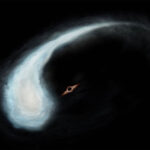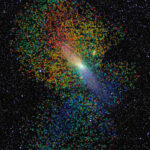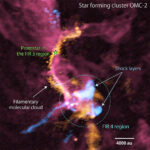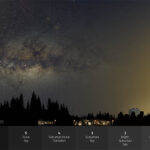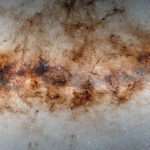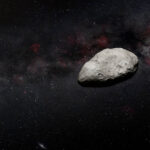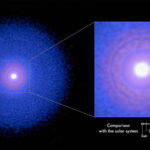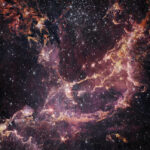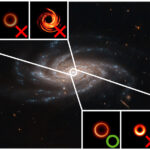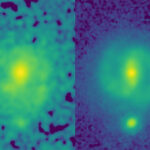A Bird? A Plane? A Tadpole?
On a sunny day with a blue sky filled with clouds, try stepping out into your garden or go for a walk. Now look at the clouds above. Use your imagination and try to make out as many interesting patterns or shapes that you can see — like a sky…
Surprise Surprise! Stars Moving into Another Galaxy
Life is unpredictable, and you never know when the next exciting adventure comes knocking at your door. Sometimes it might require you to pack your bags and move to another town or a new country altogether. Guess what! You are not alone: stars do it, too! Striking new evidence for…
High – Speed Baby Star Tantrums
Little fights over toys or candies are quite common in human households with siblings. In most cases, parents settle those adorable little disputes by sharing things. It is an entirely different story when the siblings in picture here are two baby stars and their home is a 'star forming cloud’…
Twinkle Twinkle Little Stars, How We Wonder WHERE You Are
Have you ever wondered why only fewer and fewer stars appear in the night sky, especially if you live in a city? A recent study by NOIRLab’s educational project ‘Globe at Night’, shows how light pollution is increasing fast, taking away the majestic view of our starry night sky. This…
Counting A Sky Full Of Stars
Have you tried counting the stars in a clear-night sky? How many bright objects can you identify? The Dark Energy Camera (DECam), built on the Cerro Tololo Inter-American Observatory (CTIO) in Chile, captured the most detailed picture of the galactic plane of our Milky Way as seen from the southern sky. And astronomers…
Webb Detects Extremely Small Main Belt Asteroid
An asteroid roughly the size of Rome’s Colosseum — between 300 to 650 feet (100 to 200 meters) in length — has been detected by an international team of European astronomers using NASA’s James Webb Space Telescope. Their project used data from the calibration of the Mid-InfraRed Instrument (MIRI), in which the…
How to Directly Weigh A Protoplanetary Disk?
What if we could ‘directly’ weigh a planet-forming disk without even visiting one? A group of astronomers from Japan have found a new technique to do so and it turns out to be the best method of all. Observational image of the protoplanetary disk around TW Hydrae showing the distributions of solid…
NASA Recaps Webb Telescope Findings From AAS Meeting
Scientists shared new findings and updates from NASA’s James Webb Space Telescope, also called “Webb” or “JWST,” at press conferences during the 241st meeting of the American Astronomical Society (AAS) in Seattle, from Jan. 8 to 12. Scientists from NASA and universities shared Webb results from multiple different scientific disciplines,…
AI Reveals Black Holes and Galaxies Grow up Together
Astronomers recently found that the growth of a galaxy and the growth of the supermassive black hole at its centre have a lot in common. By training a computer to study and model the data, scientists were able to confirm this decades-old theory. This is a concept illustration: Machine learning…
James Webb Telescope Reveals Milky Way-like Galaxies in Young Universe
New images from NASA’s James Webb Space Telescope (JWST) reveal for the first time galaxies with stellar bars — elongated features of stars stretching from the centers of galaxies into their outer disks — at a time when the universe was a mere 25% of its present age. The finding…

